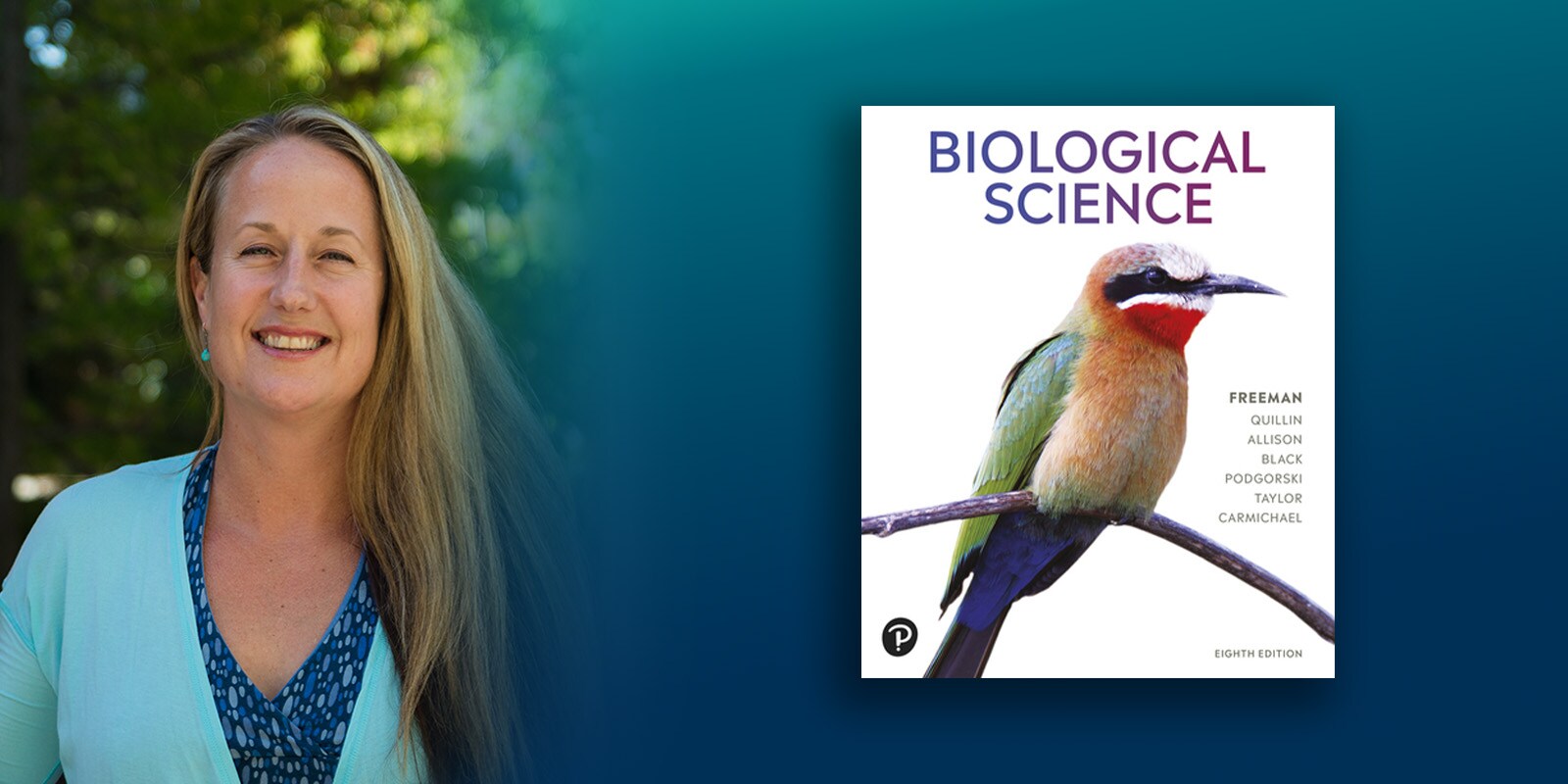
Meet Emily Taylor, author on Biological Science
1. What course(s) do/did you teach and where?
I teach at the California Polytechnic State University, San Luis Obispo. I mainly teach introductory biology (plant and animal form and function), herpetology, and numerous physiology courses including human anatomy and physiology, environmental physiology, and medical endocrinology.
2. What is a challenge that you’re currently facing in the classroom? How did/do you try to overcome this challenge?
Students are overwhelmed with competing demands for their time, so they will naturally cut back on the time they devote to a class if they can. A major challenge for me is convincing freshmen biology majors that they actually DO need to devote a certain amount of time per week studying in order to do well in the class and be prepared for their next courses. Rather than allow them to cut back on studying only to do poorly on an exam and have to recover from that, I force them to spend time studying, but in meaningful ways that do not constitute busy work. They have two or more assignments per week that ask them basic questions from reading before they come to lecture, then build on the material with application questions after the lecture. The latter questions are similar to exam questions, so they become familiar with my style of questions before the exam. This helps students know what to expect and forces them to spend time studying what is important, thereby guiding inexperienced freshmen into how to study.
3. What is the biggest lesson you’ve learned in the past few years regarding teaching biology?
I’ve learned many, but I will pass on one here that I don’t hear very often. Good teachers are those who are constantly learning. I am always learning about current research (via conferences, journals, and social media), and I have the mindset that I can always improve my teaching and so I always try new things. Instructors who think they have it all figured out are the ones that the students don’t like very much, or the ones who are not very effective. The best instructors (most effective and well-liked) are humble ones who know they can improve and are always looking for new ideas.
4. What is one best practice that you use that you think works well and you would want to share with others, whether it's in a classroom setting, working in groups, or working one-on-one with a new teaching technology?
One of the best things I have ever done is to provide content-related learning objectives for each lecture or unit. I got this idea by co-teaching with my colleague Ed Himelblau. This practice helped in two ways. First, it allowed students to understand what material they are responsible for, preventing them from becoming overwhelmed by reading a textbook chapter with some info that I don’t plan to ask them to learn. Second, it allowed me to skip the simple information to focus on more challenging concepts in lecture, while still signaling to the students that they needed to learn the simple information from the textbook. In other words, I divide labor with the textbook, relying on it for introducing simple concepts, then I introduce challenging ones in lecture, then after lecture the students can read about those challenging concepts in the textbook to solidify details.
5. What are you most proud of in your career?
I am proud of my record of combined excellence in classroom teaching and in mentoring students in research. The students with whom I have worked closely have gone on to do incredible things in biology and medicine. The thousands of students who have taken my classes over the years have learned from me how to think critically so that they can better make decisions about healthcare, parenting, voting, and so many other parts of life where biological issues can play roles.
6. In your opinion, what is higher education going to look like in the next two to three years?
Much will remain constant, but some changes are that online courses will increase in popularity and artificial intelligence will be embraced as a way of writing and learning. Our computer programs will soon help us write using artificial intelligence just as calculators help us add and subtract.
7. The 8th edition of Biological Science is being released this year. What excites you the most about this revision?
I am thrilled that we will have a fully functional etext with in-text links to the wonderful animations and study tools that we have spent so much time developing.